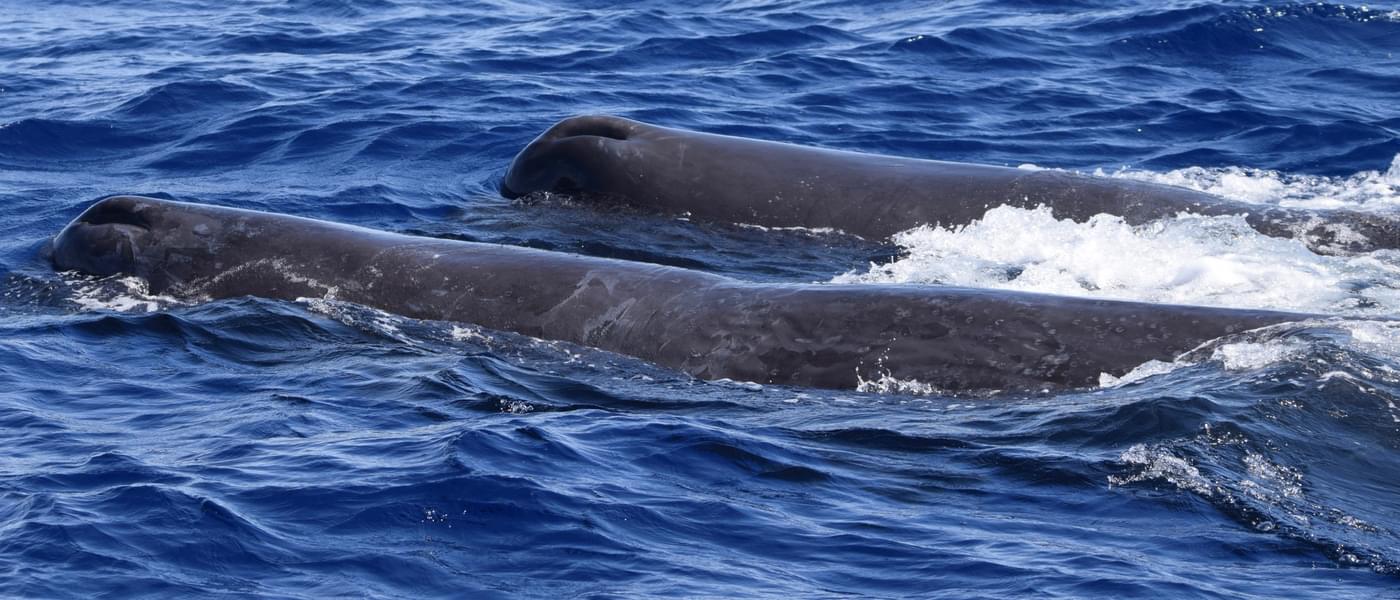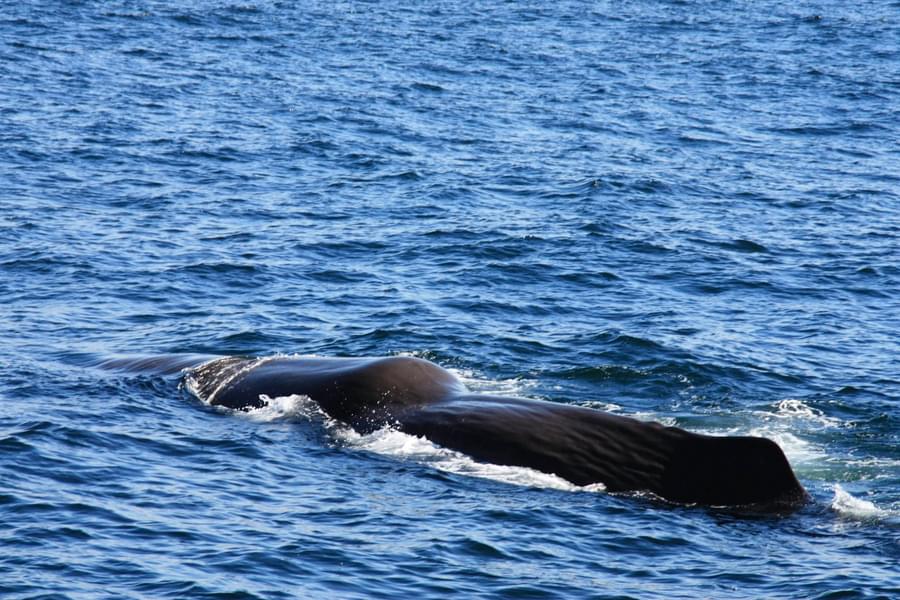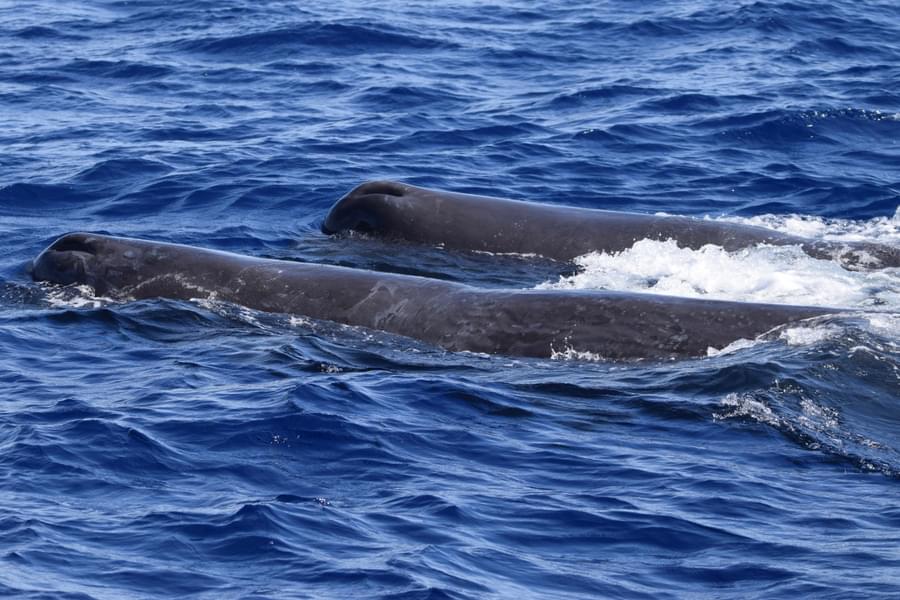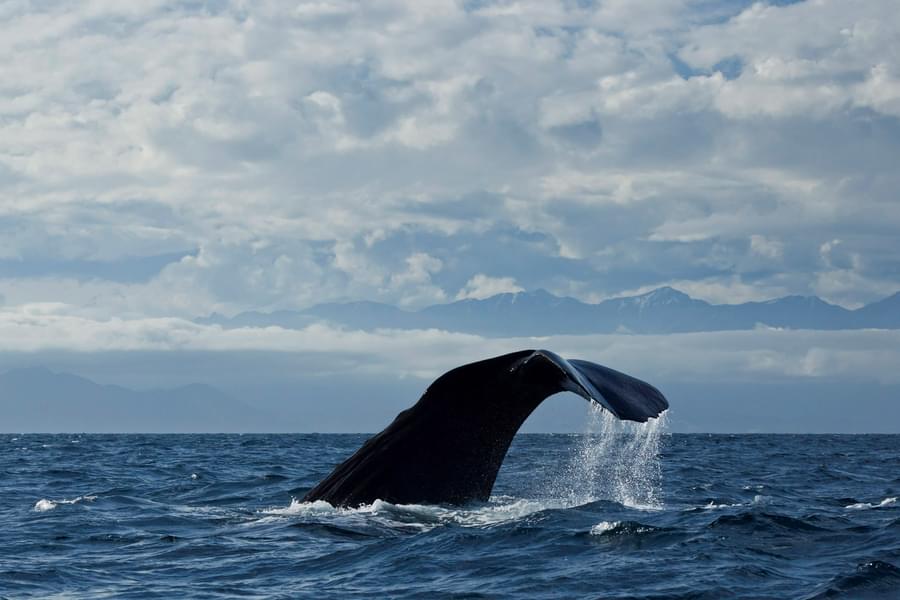Sperm whale

Physeter macrocephalus
11 - 20m
Grey/brown
Teeth
No dorsal fin
The sperm whale is the largest toothed whale. They have a very distinctive 'log-like' profile of a large head, body and dorsal hump when resting. The large, blunt-ended head is almost 1/3 of the animals total length. Sperm whales have no distinct dorsal fin but a small hump two-thirds of the way along their back. Sperm whales have slate grey or brown wrinkly skin. They have one blow hole on the left side of their head and a distinctive bushy blow which is at a 45-degree angle to the left.
Key features:
- 45° angled blow, forward and to the left
- Dorsal hump with a ridge of knuckles behind
- Brown grey wrinkled skin
- Raises triangular tail flukes vertically in a deep dive
Behaviour
Sperm whales travel in groups of 1-20 individuals. There are three main ‘groupings’ of sperm whales; “bachelor schools”, which are made up of young males, “breeding schools” which are females with young and “Solitary individuals”, which are typically older males that tend to live alone or in small groups but join the breeding schools during the breeding season.
Typically when sperm whales dive, they raise their triangular tail flukes vertically into the air. Once they have come up from a deep dive, they are often seen logging at the surface, appearing to look like a tree trunk from a distance. Sperm whales are one of the deepest diving mammals, diving over 2,000m and holding their breath for up to 2 hours each time! Their primary prey consists of deep-water fish and the giant and colossal squid, which are found in deep-sea trenches and canyons.
Threats
In the past sperm whales were heavily exploited for their body oil and spermaceti (found in their head). These oils are used in the production of perfumes, cosmetics and candles. Sperm whales are slow growing and have low reproduction rates; therefore struggled to recover quickly from high rates of exploitation, but now they are one of the most abundant whales in our oceans. Sadly sperm whales are still hunted for meat in Japan, and the targeting of males has led to population imbalances, further reducing reproductive rates. Other human induced threats to sperm whales include marine pollutants (particularly plastic), entanglement in fishing gear, collision with ships, overfishing of prey species, climate change as this can alter their habitat and the location of food and the use of ship sonar.
Distribution
Sperm whales are widely distributed around the world particularly in deep offshore waters, or submarine canyons along the continental shelf. Females and young sperm whales tend to stay in the warmer tropical and subtropical regions (rarely extending beyond 45°N or 42°S), whereas males tend to go further into temperate and polar waters. Sperm whales can be seen it the Bay of Biscay, more regularly through the late spring and summer months.
.jpg?w=900&h=600&q=85&auto=format&fit=crop&dm=1684241792&s=5e97441b99e2a82ba2454bb5ec71e18a)
.jpg?w=900&h=600&q=85&auto=format&fit=crop&dm=1684241796&s=ccb13568b64f226d34f4e77f31a9eea1)

.jpg?w=900&h=600&q=85&auto=format&fit=crop&dm=1684241811&s=e845f76e83e1e1403915f767137c00d4)



Study whales and dolphins as an ORCA OceanWatcher
The ORCA OceanWatchers online training course, along with a bespoke app, will enable everyone to collect data about whales, dolphins and porpoises. And it can be collected from anywhere that you can see the sea - whether that’s from your local beach, on holiday at the coast, scanning the seas from a cruise ship, travelling via ferry, or from your own boat.
You may also be interested in



